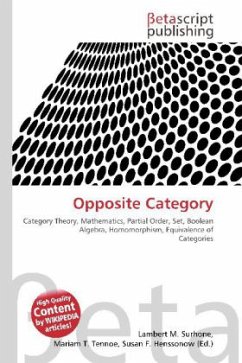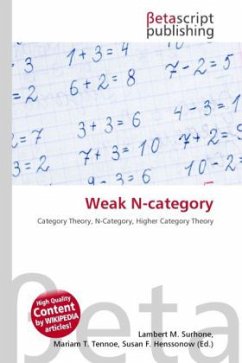Please note that the content of this book primarily consists of articles available from Wikipedia or other free sources online. In category theory, a branch of mathematics, the opposite category or dual category Cop of a given category C is formed by reversing the morphisms, i.e. interchanging the source and target of each morphism. Doing the reversal twice yields the original category, so the opposite of an opposite category is the original category itself. In symbols, Cop op = C.In mathematics, category theory deals in an abstract way with mathematical structures and relationships between them: it abstracts from sets and functions respectively to objects linked in diagrams by morphisms or arrows. One of the simplest examples of a category (which is a very important concept in topology) is that of groupoid, defined as a category whose arrows or morphisms are all invertible. Categories now appear in most branches of mathematics, some areas of theoretical computer science where they correspond to types, and mathematical physics where they can be used to describe vector spaces. Category theory provides both with a unifying notion and terminology.
Bitte wählen Sie Ihr Anliegen aus.
Rechnungen
Retourenschein anfordern
Bestellstatus
Storno








